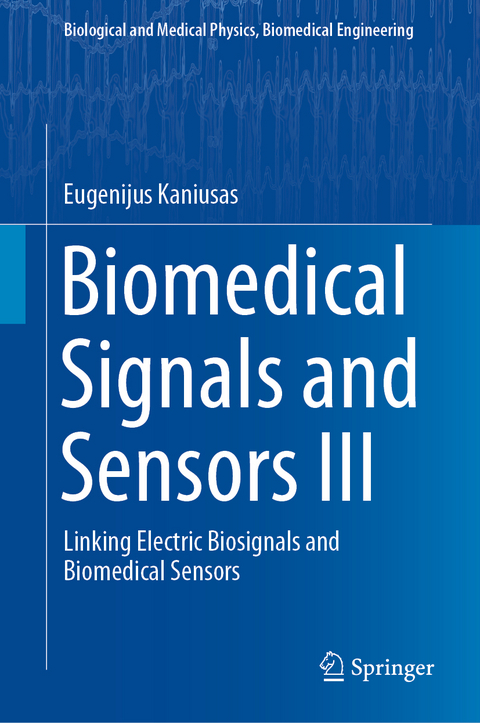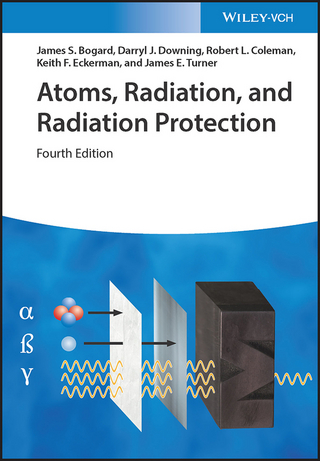
Biomedical Signals and Sensors III
Springer International Publishing (Verlag)
978-3-319-74916-7 (ISBN)
Readers will learn how these electric, magnetic and electromagnetic fields propagate and interact with biological tissues, are influenced by inhomogeneity effects, cause neuromuscular stimulation and thermal effects, and finally pass the electrode/tissue boundary to be recorded. As such, the book helps them manage the challenges posed by the highly interdisciplinary nature of biosignals and biomedical sensors by presenting the basics of electrical engineering, physics, biology and physiology that are needed to understand the relevant phenomena.
Prof. Eugenijus Kaniusas graduated from the Faculty of Electrical Engineering and Information Technology of the Vienna University of Technology (VUT) in 1997. In 2001 he got the degree Dr. techn. He habilitated (venia docendi) in the field of bioelectrical engineering in 2006. Since 1997 he has been with the Institute of Fundamentals and Theory of Electrical Engineering, VUT, since 2007 as associate professor. He gives numerous mandatory lectures at VUT, concerning Biophysics, Biomedical Sensors and Signals, Biomedical Instrumentation. Since 2011 he is the chairman of the advisory board of study affairs of Biomedical Engineering at VUT. Currently he is the head of the research group Biomedical Sensing / Theranostics within the Institute of Electrodynamics, Microwave and Circuit Engineering, VUT. He has (co)authored more than 160 publications, two volumes books, 2 patents, and various invited book chapters. Since 1999 he has contributed to 19 national and international (including EU) projects, funded by public and industry, 10 of them being coordinated by him. He is engaged as reviewer for 20 international journals and for diverse research councils (e.g., ERC grants). He is organiser of special IEEE sessions and COST workshops and co-organiser of diverse international symposia. His research areas include diagnostic and therapeutic approaches and their closed-loop combination in portable Health Care Engineering. Electric, acoustic, optic, and magneto-elastic sensors for biomedical applications are developed, e.g., for sleep, anaesthesia and fitness monitoring as well as for apneas detection and heart rate variability monitoring. Electrical Impedance Tomography - enhanced by computer tomography - is developed for a novel individual setting of lung ventilators. Modelling of physiological signals and systems is performed for the voluntary breath holding (apnea diving) and the associated fitness assessment. Electric auricular vagus nerve stimulation is developed to realise individualised Point-of-Care therapy in pain and arterial disease therapy, and in triggering healing of diabetic chronic wounds. Extensive expertise is available in adaptive, multiparametric, clinically-relevant processing of hybrid biomedical signals in the time, spectral, and space domains, and in wearable hardware/software concepts for diagnostic/therapeutic biomedical devices.
Preface.- Sensing by Electric Biosignals.- Formation Aspects.- Permanent Biosignals.- Induced Biosignals.- Transmission of Electric Signals.- Sensing and Coupling of Electric Signals.- Electrodes.- Biosignal and Interference Coupling.- Body Area Networks.
| Erscheinungsdatum | 01.09.2019 |
|---|---|
| Reihe/Serie | Biological and Medical Physics, Biomedical Engineering |
| Zusatzinfo | XVI, 609 p. |
| Verlagsort | Cham |
| Sprache | englisch |
| Maße | 155 x 235 mm |
| Gewicht | 1166 g |
| Themenwelt | Naturwissenschaften ► Physik / Astronomie ► Angewandte Physik |
| Schlagworte | Anodic Stimulation of Biosignals • Biomedical Sensors and Signals • Coupling of Electric Signals • Electric Biomedical Sensors • Electrode/Tissue Boundary • Electro-Kinetic Processes • Induced Biosignals • Propagation of Electric Biosignals • Skin Impedance • theranostic human engineering • Varying Frequency Biosignals |
| ISBN-10 | 3-319-74916-1 / 3319749161 |
| ISBN-13 | 978-3-319-74916-7 / 9783319749167 |
| Zustand | Neuware |
| Haben Sie eine Frage zum Produkt? |
aus dem Bereich


